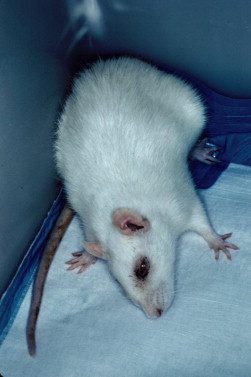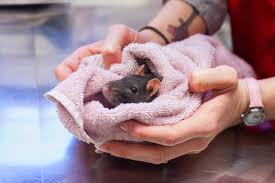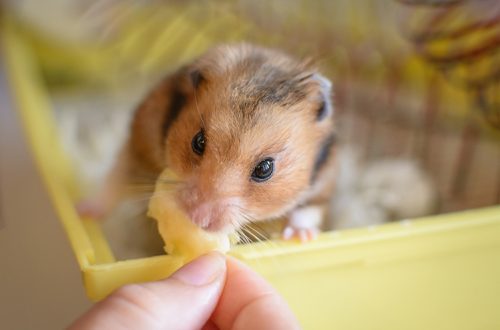
Mycoplasmosis in rats: symptoms, treatment and prevention
Decorative rats are easy to care for and bring many pleasant hours of communication to their owners. But, unfortunately, little pets get sick too. In addition to oncology, these animals are most often prone to diseases of the respiratory system, referred to as chronic respiratory syndrome. CRS is caused by a group of several pathogens, which manifests itself primarily as a violation of the respiratory tract. The most common causative agent of CRS is Mycoplasma pulmonis, a bacterium that does not have a true coat.
Microorganisms are localized mainly on the mucous membrane of the respiratory system. According to some reports, 60 percent or more of apparently healthy rodents are carriers of mycoplasma. Mycoplasmosis in rats develops due to a decrease in immunity, age-related changes and the influence of adverse environmental factors. This infectious disease is quite common and often leads to death of pets.
Contents
Mycoplasmosis in rats: symptoms
Signs of the disease in rodents are similar to those of infection in other animals and are characterized by several forms. First of all, respiratory
- frequent sneezing
- shortness of breath and wheezing when breathing;
- rapid fatigue, lethargy;
- loss of appetite;
- discharge from the eyes and nose of porphyrin.
Important! Porphyrin is a red mucus pigment produced by the Harderian gland. People unfamiliar with the physiology of rats mistake it for blood. Isolation of porphyrin is one of the characteristic signs of mycoplasmosis.
In addition to these signs of a respiratory disease, the disease is accompanied by other symptoms.

With the skin form, itching, scratching or alopecia (bald patches) appear. In females, on examination, bloody, purulent discharge from the vagina may be detected due to the development of pyometra.
If the vestibular apparatus and the middle or inner ear are affected, the coordination of movements is disturbed in the animal, a pronounced tilt of the head to one side.
With a latent stage or carriage, the pet is outwardly healthy and does not show signs of the disease. Sneezing and a slight release of porphyrin is typical at the initial stage, while the animal retains activity and appetite. Shortness of breath and wheezing in the lungs, dull tousled hair and scratching, discharge from the genitals, unnatural posture and incoordination are a pronounced clinical picture of the disease. In the terminal stage, the pet is inactive, the body temperature drops, weakness and exhaustion appear.
Diagnostics
Despite the fact that this infection has pronounced characteristic signs and symptoms, the final diagnosis should be made by a specialist. Itching and sneezing can be manifestations of an allergic reaction or tick infestation, and uncoordinated movements are caused by neoplasms in the brain. In well-equipped veterinary clinics, an accurate diagnosis can be made using the PCR laboratory method from swabs of the mucous membranes of the nose, eyes or genitals.
Do not delay visiting a veterinarian in order to begin appropriate treatment as soon as possible. Rodents have a high metabolic rate, so the development of the disease can occur rapidly.
Mycoplasmosis: treatment in rats
Treatment of mycoplasmosis in rats at home is based primarily on the use of antibacterial drugs. Antibiotics acceptable in the treatment of mycoplasmal infection include macrolides (Azithromycin, Clarithromycin, Tylosin), fluoroquinolones (Ciprofloxacin, Enrofloxacin (Baytril), Marbofloxacin), cephalosporins (Ceftriaxone), tetracyclines (Doxycycline).
Important! It is strictly forbidden to prescribe antibiotics of the penicillin series for the treatment of rodents. They are ineffective against mycoplasma. Penicillins are dangerous for rodents, due to anaphylactic shock, they can die.
Hormonal corticosteroid drugs (Dexamethasone, Prednisolone, Depomedrol, Metipred) are used in chronic and complicated cases of the disease to relieve bronchial inflammation and ease breathing. Bronchodilators (Salbutamol or Eufillin) will help expand the bronchi and stop asthma attacks. A decoction of echinacea helps to increase and maintain immunity. With cyanosis of the integument and difficulty breathing, oxygen therapy is prescribed. Diuretics reduce the accumulation of fluid in the lungs.
The disease in rodents is treated for at least two weeks, which is associated with the development cycle of microorganisms.
The course of treatment should be prescribed by a veterinarian, depending on the condition of the animal and the stage of the disease.
Caring for a sick domestic rat
Treatment for infection is quite long, full-fledged pet care contributes to its speedy recovery:
- providing heat in the room;
- air humidification for easier breathing;
- after a course of antibiotics, it is necessary to restore the intestinal microflora with the help of probiotics or fermented milk products;
- high-calorie fortified food in the form of mixtures and purees, in the absence of appetite – force-feeding with a syringe;
- a sufficient amount of liquid in the form of a drink or subcutaneous injection.
In the case of keeping several pets, the sick animal must be isolated.
disease prevention
It is completely impossible to protect a pet from mycoplasma, so the efforts of rat breeders should be aimed at preventing the manifestation and development of the disease. Following simple recommendations will help reduce the risk of illness.
It is preferable to acquire a little friend from trusted breeders. It is necessary to examine the animal, evaluate its behavior. If the animal is lethargic, sneezes, or discharges from the nasal passages and eyes are noticeable, the purchase should be abandoned. Before moving a new pet to the rest of the wards, quarantine must be maintained for at least two weeks. Proper feeding and optimal conditions without drafts and pungent odors, adding vitamin preparations to the diet, preventive intake of natural immunostimulants, timely cleaning of cells – all this will contribute to the health of the pet.
Is mycoplasma infection transmitted to humans, can other rodents and animals become infected?
Modern microbiology classifies more than thirty types of mycoplasmas, of which six species are pathogenic to humans. Respiratory mycoplasmosis in humans is caused by Mycoplasma pneumoniae. As mentioned above, Mycoplasma pulmoni is pathogenic for rodents. Rodent mycoplasma is absent among pathogens causing human diseases. In this way, a sick pet is not dangerous for its owner. However, there are studies by foreign scientists on the cultivation of a strain of Mycoplasma pneumoniae in mice. Therefore, after caring for a sick animal, personal hygiene will not be superfluous, and people with weakened immunity should be temporarily protected from contact.

Mycoplasmosis is a contagious disease that spreads both by airborne droplets and through direct contact from animal to animal of the same species. Mycoplasma is not transmitted through the clothes and hands of the host, as it dries quickly in the open air. However, after contact and manipulation with a sick animal, in order to avoid the risk of infection of healthy wards, one should change clothes and wash hands.
Mycoplasmosis in rats: lethality of the disease
The described bacterial disease will not cause big problems to a pet with high immunity. Despite the fact that mycoplasma infection is widespread among rodents, it is treatable if the disease is diagnosed in a timely manner.
But if you do not start therapy in the second, pronounced, stage of the disease, then pneumonia develops and the prognosis of the outcome is already cautious. In the future, without the use of the necessary drugs, the rat dies not from mycoplasmosis, but from secondary infections and dysfunction of the lungs, heart, liver and kidneys. At a later stage, if the treatment does not work, then in most cases the animal dies.
Treatment and further recovery of a small animal can be long, but attentive attitude, care and patience will help to cope with the problem.
Symptoms and treatment of mycoplasmosis in domestic rats
3.8 (75.56%) 18 votes





